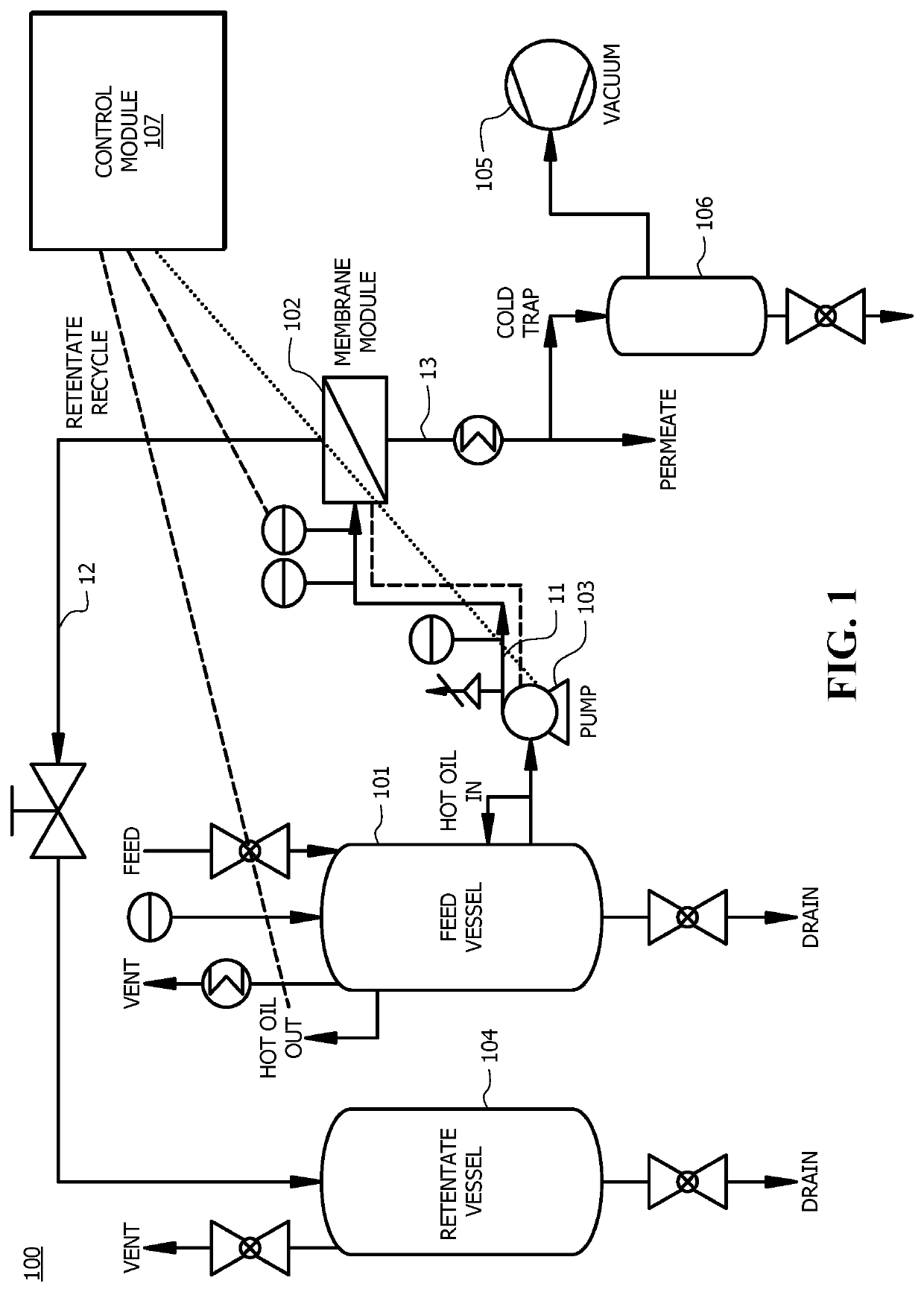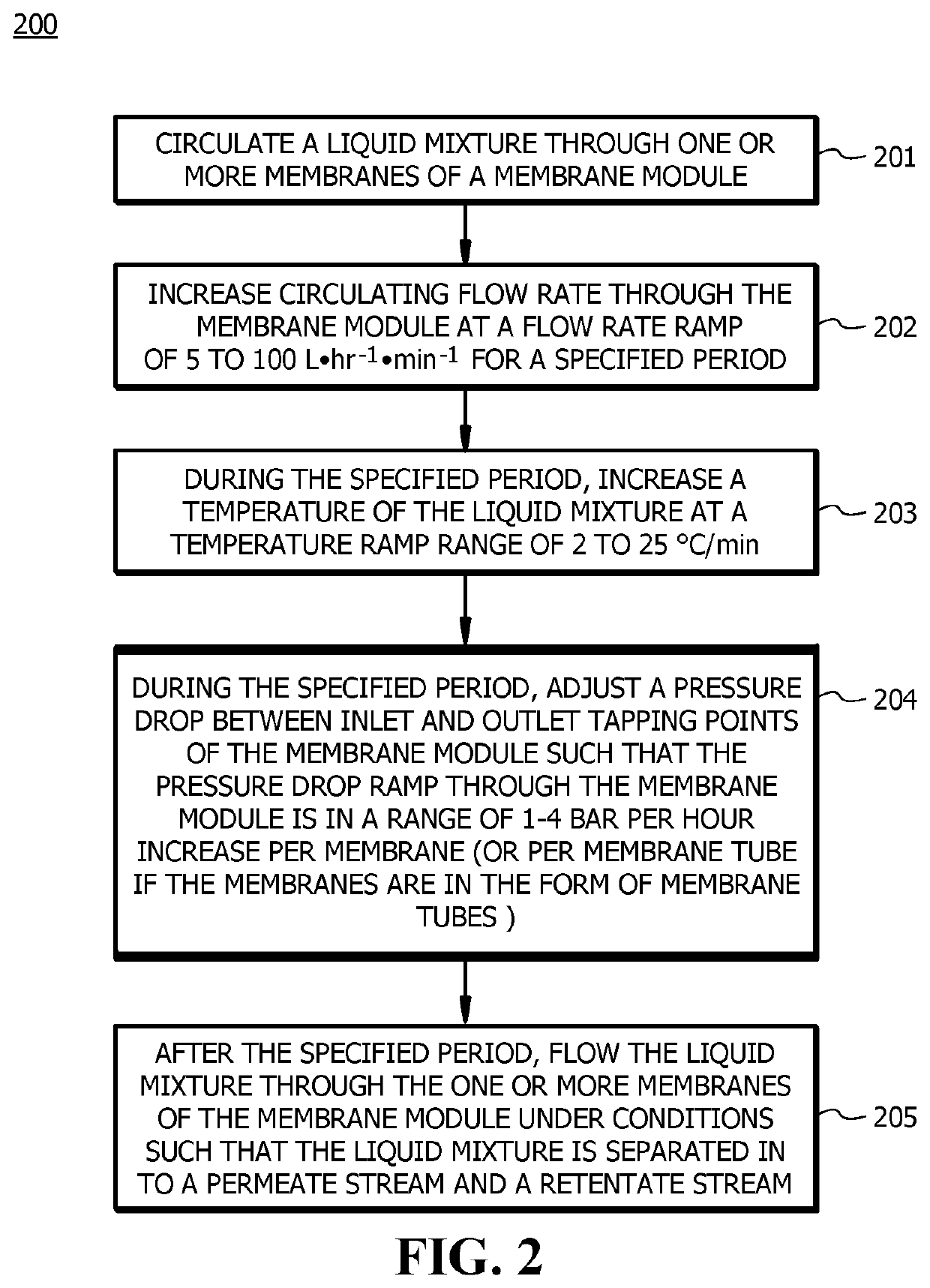Start-up procedure for rapid attainment of optimal steady-state performance in membrane separation
a technology of membrane separation and steady-state performance, applied in the field of liquid mixture separation systems and methods, can solve the problems of large steam consumption, low separation efficiency per pass, and limit the economic viability of distillation in certain situations
- Summary
- Abstract
- Description
- Claims
- Application Information
AI Technical Summary
Benefits of technology
Problems solved by technology
Method used
Image
Examples
example 1
Pervaporation Experiment in a Pilot Scale System
[0044]A liquid mixture of monoethylene glycol and water was separated using a Pervatech® membrane at a pilot plant. Each membrane module in the pilot plant included 10 membrane tubes. Each membrane tube had an outer diameter of 10.04 mm and inner diameter of 6.5 mm. The wall thickness for each membrane tube was 1.89 mm. The contacting area of each membrane tube was about 46.9 cm2. The feed concentration of monoethylene glycol was in a range of 2 to 80 wt. %. The flowrate was in a range of 100 to 1000 L / hr. The feed temperature was in a range of 90 to 140° C. The feed pressure was set in a range of 1-5 bar. The vacuum on the permeate was in a range 50 to 70 mbar. Cooling water used for recovering the permeate was at about 5° C. Simulations on the separation process were also performed in Aspen (versions 9 and 10), ACM-Aspen Custom Modeler. Statistical modeling was performed in GAMS and JMP.
[0045]The experimental results are shown in Tab...
PUM
 Login to View More
Login to View More Abstract
Description
Claims
Application Information
 Login to View More
Login to View More - R&D
- Intellectual Property
- Life Sciences
- Materials
- Tech Scout
- Unparalleled Data Quality
- Higher Quality Content
- 60% Fewer Hallucinations
Browse by: Latest US Patents, China's latest patents, Technical Efficacy Thesaurus, Application Domain, Technology Topic, Popular Technical Reports.
© 2025 PatSnap. All rights reserved.Legal|Privacy policy|Modern Slavery Act Transparency Statement|Sitemap|About US| Contact US: help@patsnap.com


